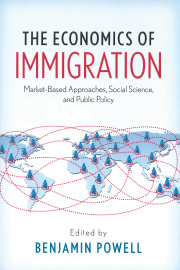It’s hard to go long without seeing a newspaper column fretting about an immediate collapse of the “housing bubble.” However, when we look at overall housing prices there is little evidence of a nationwide bubble. There are instead many localized, rapidly appreciating markets. The causes of the appreciation can vary. Some markets may have bubbles, others likely do not.
Home-mortgage rates in the United States have been near historic lows for the last few years. This has without a doubt kept payments down and helped push housing prices higher. It hasn’t caused a nationwide “bubble,” however. From 1999 to the end of 2004 the median sales price of a home appreciated at a rate of just under seven percent. That’s good growth, but it does not signal a nationwide bubble. In fact, after adjusting for inflation, 12 states actually had lower prices at the end of the five-year period than they had at the beginning.
The housing price run-up has occurred only in particular states and metropolitan regions. Only eight states have had real prices increase by 50 percent or more from 1999 until the beginning of 2005. Even within states it’s often localized markets that have seen much of the run up. Cities like Boston, Washington D.C., Miami, Las Vegas, and San Francisco have seen substantial increases on an already pricey base. Each market has both national and local factors that influence prices. In some cases, these factors justify even the very high prices we see today.
The San Francisco Bay Area provides an interesting case study. With the median home price up to $644,000 and appreciation at 18 percent over the last year, many fear this is a prime example of a bubble. However, it isn’t a craze of speculative buyers who have driven prices up here. Neither is it the availability of new mortgage products. Sure, zero down and interest-only loans have helped more buyers demand homes than would have otherwise, but in the face of greater demand, prices have only been bid up because builders have not expanded production rapidly enough to supply the greater demand.
The Bay Area isn’t cursed with a shortage of land. There is plenty of it. But builders are not allowed to build on it. Over a million acres, nearly a quarter of total land in the region, is public parkland, state and federally owned beaches, mountains, forests and green spaces or protected farmland, wetland, natural habitat or watershed. All are off limits for development. The land that is “available” for development is severely restricted. Cities around the region impose large lot zoning, limit building permits, impose long wait times and delays, and enforce urban growth boundaries to limit development.
Sixty percent of Bay Area cities are not producing enough new housing to meet the state’s guidelines for their “fair share.” Until the 1970s California home prices were in line with national averages. It’s only once they started adopting land use and urban growth controls that prices began to climb. Over the last 20 years the number of government restrictions on building have only increased. As growth controls have tightened, prices have escalated.
Although California was an early adopter of growth restrictions, these types of ordinances now exist in many housing markets. Economists Edward Glaser of Harvard and Joseph Gyourko of the University of Pennsylvania studied the effect government restrictions have on housing prices in a number of markets around the country. They found that 90 percent of the difference between physical construction cost and the price of new homes could be attributed to government restrictions on building. Only 10 percent of the difference was due to intrinsically scarce land.
Government restrictions on building can’t explain all the high-priced markets in the country. Las Vegas and Miami seem to be exceptions where new construction has expanded rapidly but prices still surge. In these cases, speculative bubbles may be at work. In Miami as many as half of the buyers of new apartments resell the unit before ever moving in.
Housing markets are driven by many factors. If interest rates go up or we have a recession, it may hurt prices in many markets. Those most at risk will be the markets where speculation has been greatest. Other markets, driven by supply restrictions, won’t see as great a decrease and may just slow their appreciation. In those markets the risk is that government will rapidly ease restrictions. In California’s political climate at least, that’s not a likely event.











